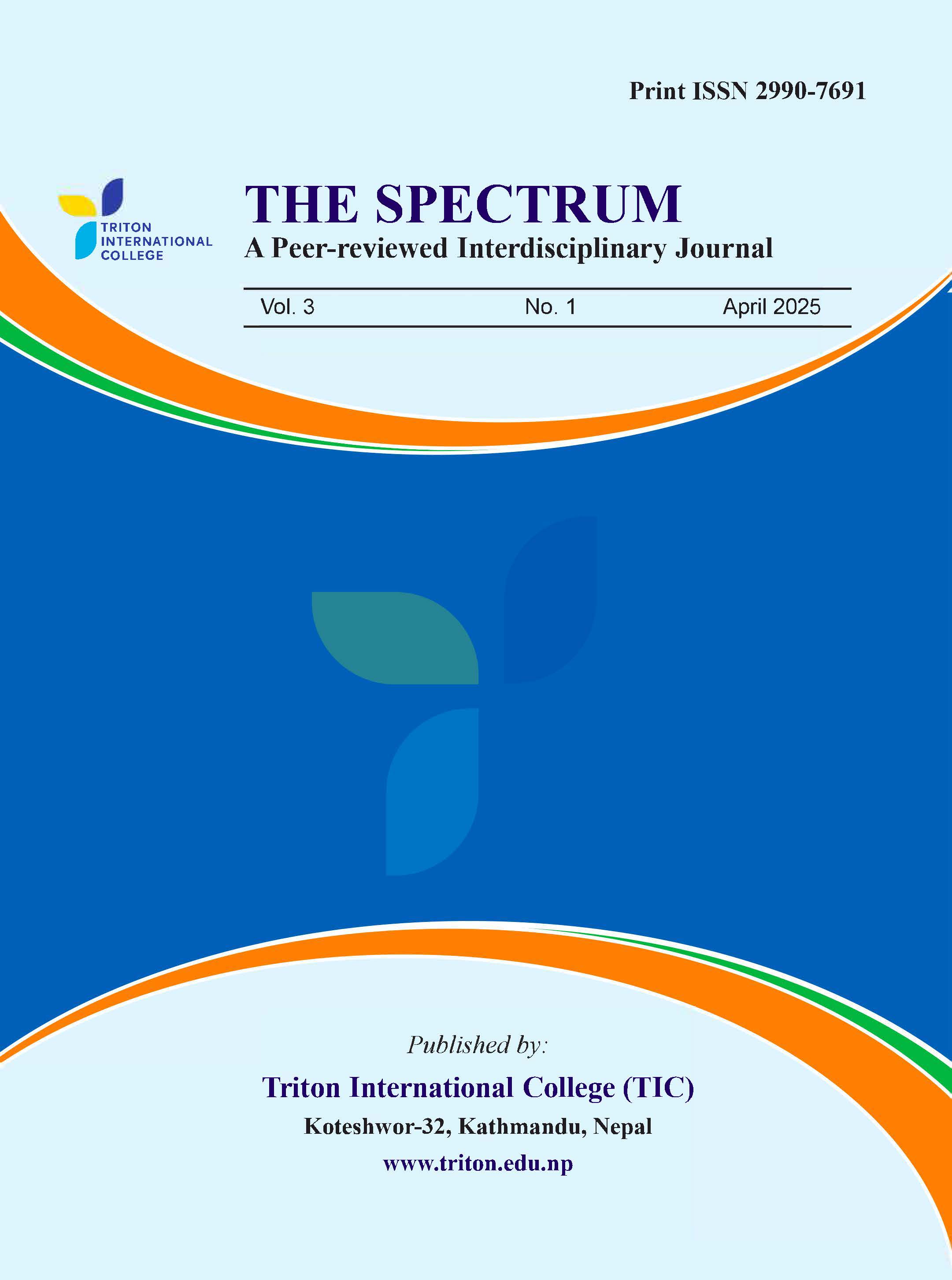An Exploration of Linguistic Anthropological Expression: Reading rē (रे) in Nepali Language and Culture
DOI:
https://doi.org/10.3126/spectrum.v3i1.77370Keywords:
Particle rē, Linguistic anthropology, Uncertainty, Discourse analysisAbstract
This research explores the various uses of the particle rē (रे) in Nepali discourse, emphasizing its role as a marker of uncertainty, politeness, and affective nuance. The research employs linguistic anthropology and discourse analysis as theoretical frameworks, such as Dell Hymes' SPEAKING model, Pierre Bourdieu's concept of linguistic capital, and the Sapir-Whorf hypothesis. The analysis of expressions of rē (रे), as a versatile linguistic device, reveals that the particle conveys uncertainty, mediates assertions, and fosters social harmony. The study underscores the cultural and social importance of what might otherwise be perceived as trivial linguistic features. It also infers the usage of rē varies across geographic regions, social contexts, and gender identities, reflecting broader cultural values such as collectivism, indirectness, and face preservation. The study contributes to ongoing discussions in linguistic anthropology regarding the interaction between language, culture, and power, emphasizing the necessity of understanding local linguistic features to appreciate the complexity of human communication.
Downloads
Downloads
Published
How to Cite
Issue
Section
License

This work is licensed under a Creative Commons Attribution-NonCommercial 4.0 International License.
This license allows reusers to distribute, remix, adapt, and build upon the material in any medium or format for non-commercial purposes only, and only so long as attribution is given to the creator.




